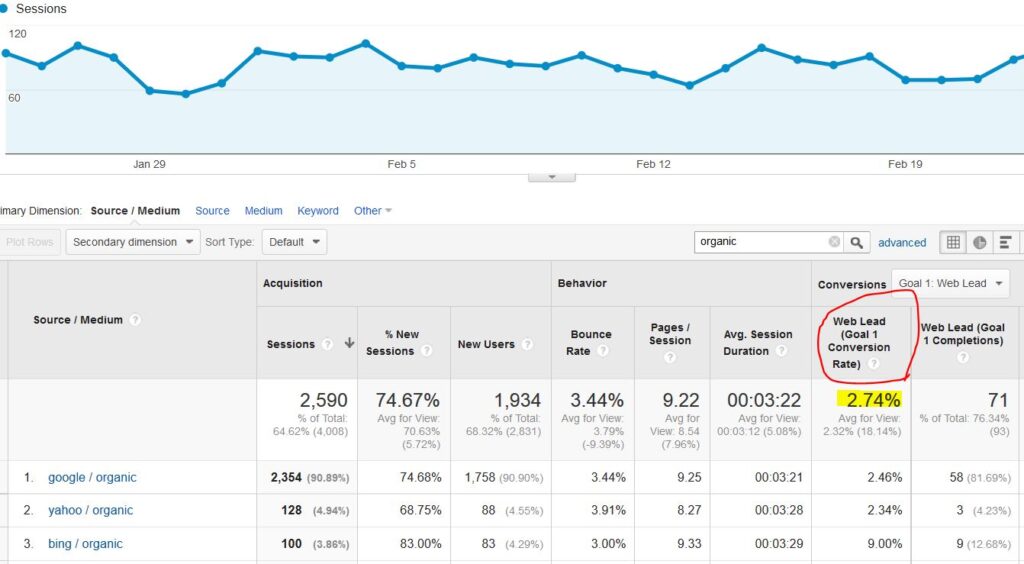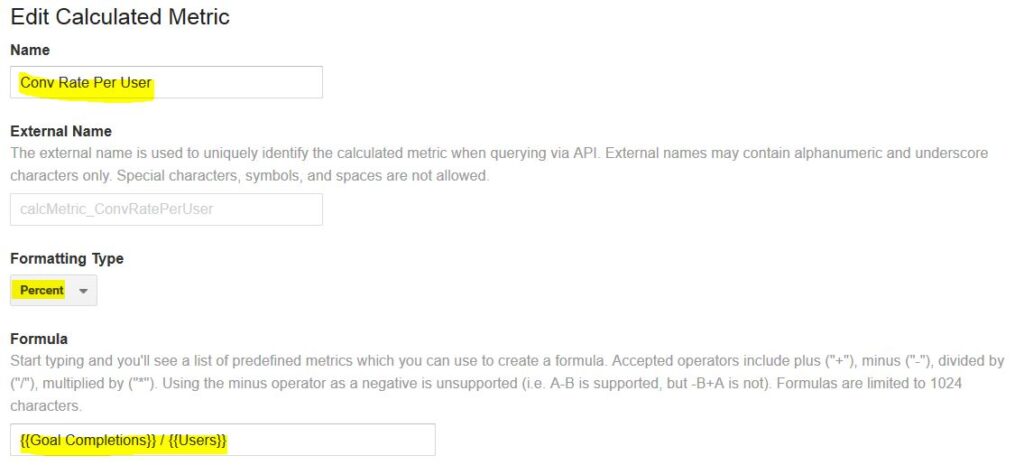
With most of your practice’s marketing and advertising efforts the end goal is lead generation. You want exposure by reaching new and old patients and you want them to take action. This makes tracking your leads vital. However, just as important as leads is conversion rates.
Why should I care about anything but growing leads? Well, you could be showing growth in website leads, but experiencing a lackluster, or even declining, website conversion rate. This matters because if you’re investing in tactics that are driving traffic to your website you want to make the most of this traffic. A conversion rate that is stagnant or declining likely means you’re leaving money on the table. These are web visitors that are not converting into leads.
The first step in improving your conversion rates is being aware of this data. A practice’s conversion rate can be broken into three unique segments, which I’ve outlined below:
1) Know your website conversion rate: this is the percentage of total visitors that results in website conversions (leads). You can see this noted in several different areas within your Google Analytics dashboard:

This is an important stat, but I would argue that there’s a better way to gauge website conversions…
2) Know your true website conversion rate: your “true” conversion rate is the percentage of unique visitors that results in website conversions (leads). This is more valuable because lead generation is a process. Think of it like dating. There’s a necessary courtship required before you show commitment. This is especially true for aesthetic practices due to the sensitivity and nature of the work done. Remember that marketing isn’t selling. You need your website to build the “know, like and trust” factors with the patient.
How do I calculate this? You’ll need to set up a custom report. To do this you’ll want to go to the Admin section of your Analytics account and then select ‘Calculated Metrics’. Then you’ll want to set up a new metric that looks like this:

Then find the Customization tab and click to create a new custom report. That report should look like this, but make sure you account for all your conversions here:

Notice you know can see sessions (total visitors), users (unique visitors), conversion rate of total visitors, and conversion rate of unique visitors. If you can continue to grow your unique visitors and your conversion rate of these unique visitors then you will inevitably have strong lead growth.

3) Know your lead-to-consultation conversion rate and your consultation-to-patient conversion rate: these are two separate numbers you’ll want to track independently, but both very important. If you have a low lead-to-consultation ratio then you likely either have low quality leads or an inadequate follow up process. If your follow up process is spot-on, think about what the call to action is. An e-book opt-in likely won’t bring you leads that are ready to come in for a consultation. I’ve also seen Facebook lead gen campaigns produce varying degrees of “warmth” among leads.
If you’re having trouble converting consultations into patients then evaluate that entire process. Think about the time you spent answering questions, your bedside manner, and expectations set, as well as you and your staff’s friendliness. One tip to help patients doing their due diligence by getting multiple consultations is to have your staff politely follow up with them with a list a good questions to ask the other practices they’re meeting with. This will help you stand out.
You’ll also notice that the more transparent you are with your pricing the higher quality leads you’ll generate. Often times your staff may quickly get a hold of a lead only to immediately find out that they simply don’t have enough money. Keep in mind that there are tactics your staff can take to “vet” the lead, and set expectations, without committing to an exact price. Even if you follow this approach, it’s still possible you’re running into leads with no money. If that’s the case then look for geographical correlations among these leads, and then consider targeting other areas of your city, metropolitan, or county.
Conversion tracking is crucial to all aspects or your marketing and advertising. If you’re looking for growth it’s imperative that you stay on top of these numbers. Remember that Google Analytics data can sometimes be misleading, so it helps to have a trusted expert guide you through what you need to focus on.
Would you like to learn more about conversion tracking, Google Analytics, or growing your practice’s conversion rates? Just drop TRBO a message here or call us directly at 877-673-7096 x2.





